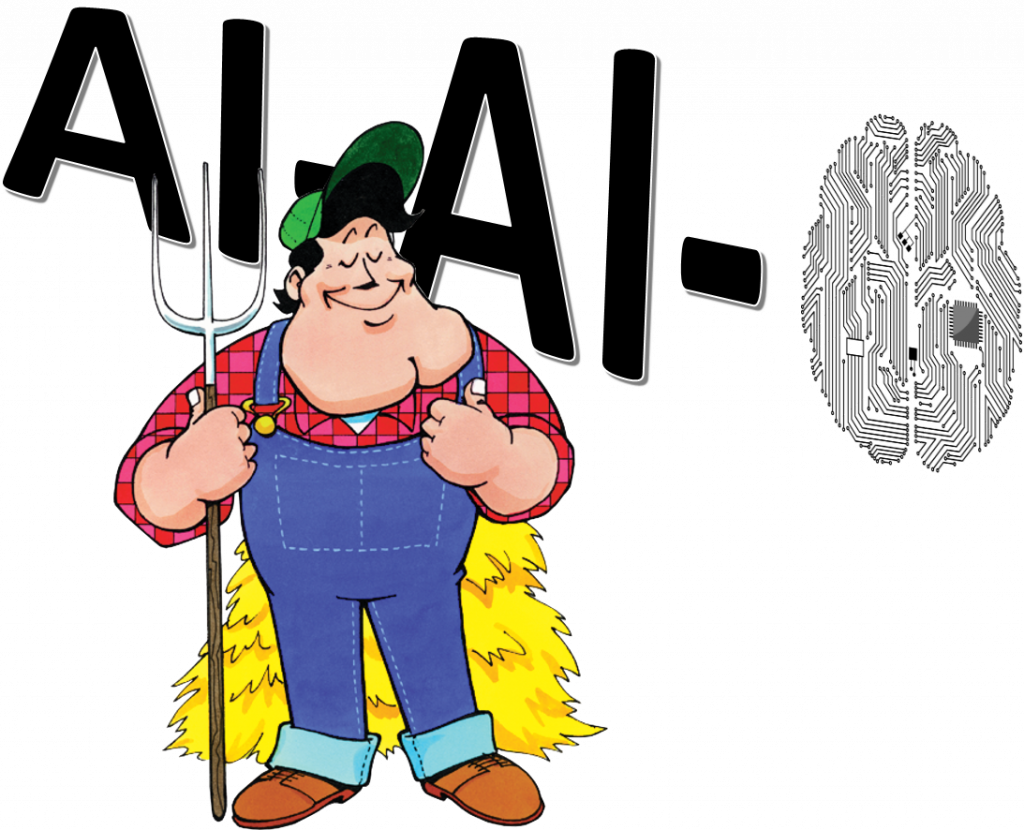Children have been singing about Old MacDonald and his farm for the last century. A lot has changed on the farm over those 100 or so years. Jayson Lusk (@JaysonLusk), Head of the Agricultural Economics Department at Purdue University, reports, “In 1900, just under 40 percent of the total US population lived on farms, and 60 percent lived in rural areas. Today, the respective figures are only about 1 percent and 20 percent. The United States had between six and seven million farms from 1910 to 1940. A sharp decline in the number of farms occurred from the 1940s to the 1980s. At the same time, the average farm size more than doubled, from about 150 acres to around 450 acres.”[1] Confronted with those facts, one might conclude the U.S. should be having trouble feeding itself; but, that’s far from the truth. Technology has stepped in to augment farm workers and this transformation of the agricultural sector continues to unfold. The same transformation is occurring in many places around the globe. New technologies — like artificial intelligence (AI) — are maturing and assisting agricultural professionals at a critical time in human history. One new wrinkle is climate change — which is radically changing weather patterns around the world. Jim Chambers, a Senior Vice President at Iteris, observes, “For thousands of years, the survival of farmers’ crops — and finances — have been inextricably linked to the weather. Whether growing corn on the plains of Nebraska or wheat in the mountains of southeastern Turkey, Mother Nature’s seemingly unpredictable temperament has forced farmers to find innovative ways of better understanding soil moisture, rainfall, and crop health throughout the ages.”[2] Artificial intelligence can help — which has many farmers singing AI-AI- Oh!
Agriculture’s perfect storm
Severe storms are anathema for agricultural professionals and many analysts believe a perfect storm is brewing in the agricultural sector. Daniel Newman (@danielnewmanUV), CEO of Broadsuite Media Group, explains, “With exploding populations, global warming, and less land available for cultivation, we’re actually facing a global food shortage of epidemic proportions. How will we manage to feed and sustain 9 billion humans estimated to populate planet earth by 2050? And how will we support the 59-98 percent increase in food consumption that population is likely to need?”[3] Newman’s prediction of a potentially catastrophic food shortage is backed by hundreds of scientists. Cheyenne MacDonald (@_cheymac) reports, “A new report penned by 130 national academies warns that the food supply is becoming increasingly vulnerable to extreme weather by driving the conditions that will make such events even worse in the future. At the same time, humanity continues to fall short of nutrition targets around the world, with the number of undernourished people steadily on the rise.”[4] Although these predictions are dire and need to be taken seriously, technology is offering some hope for the future.
AI and the future of agriculture
We now live in the digital age and the agricultural sector, like other economic sectors, can benefit from digitization. Heinz Strubenhoff (@HStrubenhoff), a Senior Private Sector Specialist in the International Finance Corporation, writes, “Worldwide, 570 million farmers and millions of agribusinesses, traders, and retailers supply 7.6 billion people with food. Digital solutions will dramatically reduce time, costs, and waste in today’s highly complex food supply chains.”[5] Digitization involves leveraging data generated by connected systems (e.g., the Internet of Things (IoT)). Newman explains, “Like many issues humans are facing in the world today, we are seeing digital transformation in agriculture, most specifically in the form of artificial intelligence.” AI, specifically cognitive computing (which includes machine learning), is being used to help agricultural professionals use resources more effectively to generate superior results. “By far,” Newman writes, “the greatest development in agricultural technology (AgTech) comes in the form of connected sensors and the IoT.” Experts continue to find new ways to use cognitive technologies to improve agriculture. Iteris’ Rebecca Sakayeda (@RSakayeda) notes, “AI and machine learning are used in a number of agricultural applications today. Examples include yield prediction algorithms based on weather and historical yield data; image recognition algorithms to detect pest and diseases in plants; and robotics to harvest different types of specialty crops. So, it’s a growing technology that has increasingly important applications to improve agricultural processes.”[6] Below are some of the ways experts predict digitization and AI will improve the agricultural sector in the coming years.
Improved water usage. All crops need water and experts are predicting future water crises. Chambers notes, “With a robust data set of ag-specific, hourly, and daily weather information going back several decades, there are tools available today that can help farmers and field researchers predict future outcomes by combining weather data with soil, crop, and grower-provided information. This data drives a series of models that look at the interaction between the plants, soil and weather, which can then be used to better predict when certain things are going to occur and what you can do about them to be a better manager.”
Improved crop yields. Donna Barry explains, “A.I. technologies, such as autonomous tractors, drones and remote sensors, [can be used to] collect and analyze data in order to help farmers increase crop yields.”[7] In addition, she notes, “Cameras attached to drones may detect weeds and monitor crop health from hundreds of feet above. Predictive technologies may support farmers by aggregating an otherwise overwhelming amount of data and providing actionable insights to help them make decisions.”
Research and development. “Just like AI is helping speed up pharmaceutical trials by decreasing the length of the trial and error phase of development,” writes Newman, “it’s doing the same thing for agriculture. The AI teams at Monsanto, for instance, found that algorithms could help them more quickly determine which hybrid plants would grow best in real-life planting conditions, saving massive amounts of product development time.” Along those same lines, Chambers notes, “Predictive modeling is transforming the way farmers make critical decisions about the lands they farm, leading to more sustainable and productive yields with less costly hardware involved.”
Concluding thoughts
Although I titled this article “Young MacDonald’s Farm,” the fact is we need to attract more young people into the agricultural field. The use of emerging technologies in agricultural, like artificial intelligence, may not be enough to motivate young researchers into the field. On the other hand, we’re told up and coming generations are more socially conscious than previous generations and what could be more important to society than saving the world from starvation. As Newman notes, “I’m hoping a younger generation, wanting to find purpose in their work, will be drawn to this promising market. Because when it comes to digital transformation in agriculture, there is potential to impact not just farmer productivity, but billions of human lives.” If technology continues to help feed the world, future generations may change the chorus Old MacDonald’s farm and enthusiastically sing AI-AI-Oh.
Footnotes
[1] Jayson Lusk, “The Evolution of American Agriculture,” Jayson Lusk blog, 27 June 2016.
[2] Jim Chambers, “What roles will AI and machine learning have in feeding the world?” AGDAILY, 23 November 2018.
[3] Daniel Newman, “4 Ways Artificial Intelligence Will Drive Digital Transformation In Agriculture,” Forbes, 7 February 2019.
[4] Cheyenne MacDonald, “Scientists warn the world’s food systems are ‘failing us’ as emissions speed up climate change and put crops at greater risk from extreme weather,” Daily Mail, 28 November 2018.
[5] Heinz Strubenhoff, “The digital revolution—a new weapon against food waste, hunger, and emissions,” The Brookings Institution, 6 September 2018.
[6] Rebecca Sakayeda, “Artificial Intelligence And Machine Learning In Agriculture Today,” AgTech, 27 November 2018.
[7] Donna Barry, “Artificial intelligence and food – The future is now,” Food Business News, 27 December 2018.





